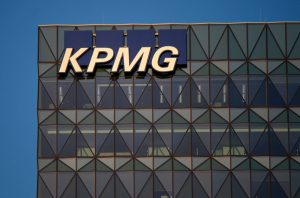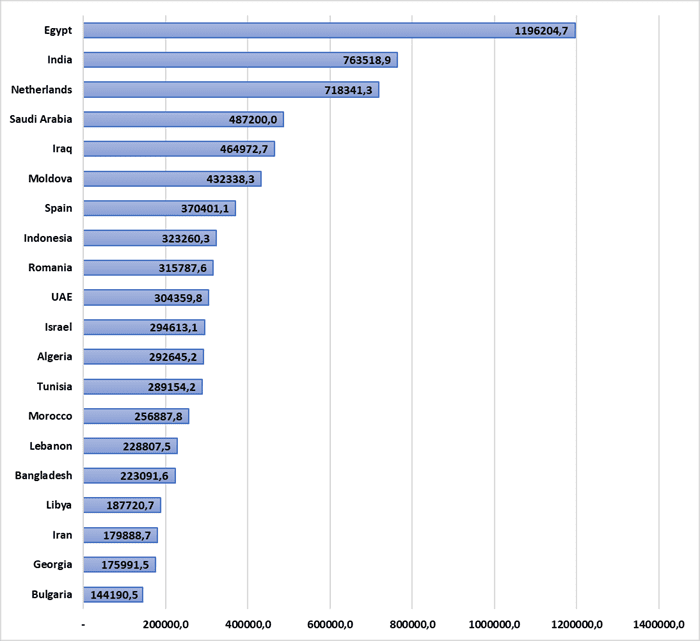
KPMG has announced a reduction in revenues in Ukraine in the 2020 financial year to UAH 552 million compared to UAH 561 million in 2019.
“For a year of economic and social turbulence, KPMG International announced the total annual income of KPMG firms in the amount of $ 29.22 billion for the fiscal year that ended on September 30, 2020 against $ 29.75 billion in 2019. In Ukraine, KPMG’s revenues for the 2020 fiscal year were UAH 552 million against UAH 561 million in 2019,” the company said in a release on its website.
“This applies to the business of our clients, as well as all our services in the field of audit and activities in the field of taxation and consulting. We introduce innovations and work closely with our strategic alliances to help clients transform their business into a digital format,” the press service said citing Andriy Tsymbal, the managing partner of KPMG in Ukraine.

The owners of the Capital Times investment company with offices in Ukraine and Belarus, Sergey Goncharevich and Eric Nayman, divided their business into B2B and B2C, keeping the Capital Times brand for Goncharevich’s B2B, Nayman said.
“My longtime partner Sergey Goncharevich and I decided to split Capital Times into two parts. (…) The combination of two completely different business models under one Capital Times brand no longer made economic sense. The Capital Times brand remained with my previous partner Sergey Goncharevich,” he wrote in his YouTube address.
Nayman indicated that he would be engaged in wealth management and B2C in general under the Hugs brand.
According to him, Goncharevich, in turn, will continue to work in the direction of B2B and in the field of corporate finance, he will help companies in finding financial resources, and owners – to buy or sell a business.
Capital Times was founded in 2006 and specializes in investment consulting and wealth management. The main offices of the company are located in Kyiv and Minsk. The managing partners of the company are Erik Nayman, a member of the Council for Economic Development under the government of Ukraine, and Sergey Goncharevich.
HUG’s company specializes in investment consulting. It has over 300 active accounts with Interactive Brockers, over UAH 400 million under management and conducts over 150 transactions daily.
Internal and external debt of Ukraine in 2009-2020.
SSC of Ukraine
Top 20 countries Ukraine has posted the highest surplus of trade in goods in Jan-Sept of 2020 (thsd USD).

SSC of Ukraine

On New Year’s Eve, the capital’s metro will run two hours longer, the press service of the municipal enterprise Kyiv Metro said.
“The last train will leave each station at different times. From the city center around 2:15. Additional opening hours are added to the regular timetable for each station located at the entrance and on the platform,” the enterprise wrote on Facebook.
In turn, Head of the municipal enterprise Kyiv Metro Viktor Brahinsky said that there may also be restrictions (closings) on the entrance for passengers at the stations Zoloti Vorota (Golden Gate), Khreschatyk, Maidan Nezalezhnosti (Independence Square), Poshtova Ploshcha and Kontraktova Ploshcha.
“The mechanism is being used for security reasons to avoid mass congestion of passengers on station platforms,” he wrote on Facebook.

The total wage arrears in Ukraine in November increased by 5.8% and as of December 1, 2020 amounted to UAH 4.011 billion, the State Statistics Service has reported.
According to its data, last month the amount of wage arrears to employees of economically active enterprises rose by 7.9% and as of December 1 of this year amounted to UAH 2.725 billion.
The statistics agency reported that a reduction in wage arrears in November 2020 was recorded in Kherson (by 21.1%), Rivne (by 2.5%), Zhytomyr (by 2.4%), Zaporizhia (by 1.3%), Dnipropetrovsk (0.9%) regions and Kyiv (6.3%).
At the same time, an increase in wage arrears was observed in Lviv (by 40.2%), Luhansk (by 40%), Zakarpattia (by 38.3%), Chernivtsi (by 36.5%), Volyn (by 24.1%), Kirovohrad (by 19.7%), Donetsk (by 10%), Ivano-Frankivsk (by 8.1%), Ternopil (by 7.1%), Khmelnytsky (by 4.9%), Chernihiv (by 4.7%), Poltava (by 4.6%), Vinnytsia (by 2.9%), Odesa (by 2.3%), Cherkasy (by 1.9%), Sumy (by 1.3%), Mykolaiv (1.2%), and Kyiv (0.3%) regions.
The State Statistics Service clarifies that in terms of sectors during the specified period, wage arrears decreased in the field of arts, sports and entertainment by 6.8% (to UAH 590,000), in the field of administrative and support services by 2.4% (to UAH 17.126 million), agriculture by 2% (to UAH 56.093 million), at transport, storage and courier enterprises by 1.5% (up to UAH 318.646 million), in the field of public administration and defense, mandatory social insurance by 0.3% (to UAH 5.285 million).
Wage arrears in November this year increased in provision of other types of services by 2.6 times (to UAH 1.44 million), in education by 8.9% (to UAH 17.364 million), healthcare by 8.3% (to UAH 46.892 million), at industrial enterprises by 7.1% (to UAH 3.01 billion), in wholesale and retail trade by 6.8% (to UAH 39.764 million), in the field of temporary accommodation and catering by 4.8% (to UAH 12.86 million), real estate transactions by 4.2% (to UAH 56.636 million), in the field of information and telecommunications by 4.1% (to UAH 10.919 million), in the field of professional, scientific and technical activities by 2.8% (to UAH 267.301 million), construction by 1.5% (up to UAH 49.107 million), in financial and insurance activities by 0.3% (to UAH 10.824 million).